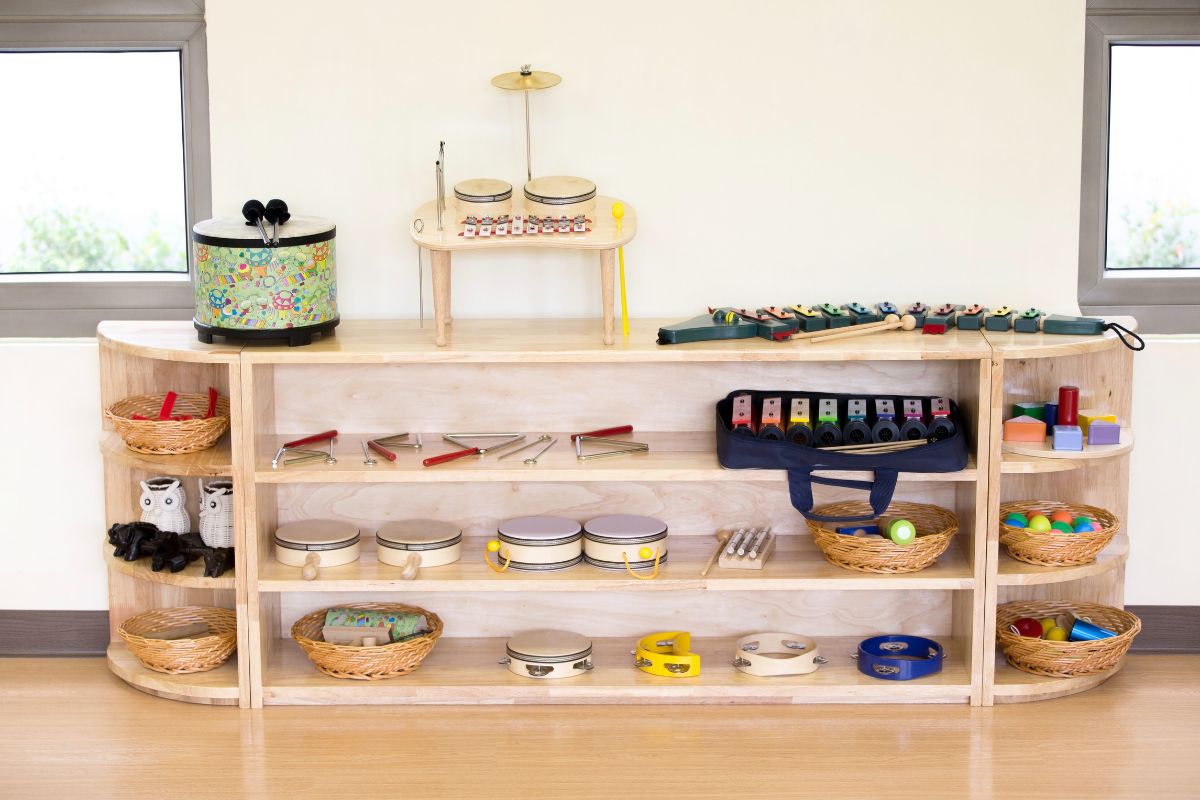Music has a profound impact on child development. It helps nurture creativity, enhance brain function, and improve emotional well-being. In fact, integrating music into early childhood education presents a comprehensive learning experience that goes beyond simple entertainment. A highly popular method used around the world is the Montessori approach to music education. This article explores the fascinating world of Montessori musical instruments, from baby musical toys to kids drum sets.
The Montessori Philosophy in Music Education
The Montessori method, developed by Italian educator Maria Montessori, emphasizes the importance of allowing children to learn at their own pace and through personal experiences. This holistic approach extends to music education as well. Children are exposed to a wide range of instruments and activities designed to foster their innate musical abilities, cultivate self-expression, and instill a love for music.
Benefits of Montessori Music Classes
When implemented correctly, the Montessori approach offers numerous benefits to young children. Not only does it contribute to cognitive, emotional, social, and physical development, but also allows them to:
- Develop fine motor skills through manipulation of instruments
- Learn about different types of sounds and instruments
- Explore new creative outlets
- Create and experiment with rhythms and melodies
- Gain greater confidence and self-esteem
By incorporating Montessori musical instruments into your child’s daily routine, you can provide an engaging and educational environment that cultivates a lifelong passion for music.
A Guide to Montessori Musical Instruments
To help parents find the right musical instruments for kids, here is a list of some popular and age-appropriate selections:
Baby Musical Toys
For infants and toddlers, baby musical toys provide a gentle introduction to the wondrous world of music. These simple yet effective devices combine tactile stimulation with auditory excitement, helping young children enhance motor skills and become more familiar with various sounds. Some Montessori-approved baby musical toys include:
- Wooden shakers: Grasping and shaking these lightweight wooden instruments helps babies strengthen hand muscles, while the pleasant sounds stimulate their auditory senses.
- Bell rattles: These toys encourage the development of object permanence and teach cause-and-effect as children learn that shaking the rattle produces the delightful ringing sound.
- Rainmakers: Slowly turning this cylinder filled with beads allows little ones to observe how movement generates sound, fostering listening skills and developing concentration.
Kids Drum Set
A kids drum set is an excellent addition to any Montessori environment for older toddlers and preschoolers. Playing drums offers several advantages, such as honing fine motor skills, promoting hand-eye coordination, teaching rhythm patterns, and allowing for creative self-expression. Moreover, percussion instruments can serve as an outlet for children to channel their energy positively. A toddler drum set usually consists of one or more small drums, cymbals, and a pair of drumsticks or mallets. Introducing your child to a kids drum set fosters auditory and sensory awareness, along with boosting their creativity and confidence.
Wooden Percussion
Wooden percussion instruments are perfect for incorporating natural, earthy tones into your Montessori musical space. Not only do they produce soothing sounds that evoke a connection to nature, but they are also environmentally friendly and safe for children to play with. Some popular wooden percussion instruments available are:
- Wooden xylophones: Often referred to as “glockenspiels,” these beautiful wooden xylophones feature bars arranged in increasing order of size over a wooden frame. Each bar represents a different note, allowing children to experiment with various melodies.
- Claves: These simple wooden sticks can be struck together to create rhythmic patterns, aiding in the development of coordination and concentration.
- Tone blocks: Also known as woodblocks, tone blocks come in varying sizes and shapes to produce distinct pitch notes when struck with a mallet.
Other Popular Montessori Musical Instruments
In addition to the aforementioned options, several other Montessori-inspired musical instruments cater to diverse interests and learning goals. Some of these include:
- Maracas: With their distinctive rattling sound, maracas invite kids to establish rhythm and engage in creative role-playing scenarios such as recreating international music performances.
- Tambourines: These handheld drums have metal jingles that produce shimmering sounds, enabling children to accompany their favorite songs or explore beat-making possibilities.
- Harmonicas: Playing harmonicas introduces children to wind instruments and helps develop breath control while reinforcing the concept of pitch variation.
Creating a Montessori-Inspired Music Space
Setting up an inviting and child-friendly music area is crucial in nurturing a love for music among young learners. Here are some simple tips to create an effective Montessori-inspired music space:
- Select age-appropriate Montessori musical instruments that stimulate the senses and allow children to explore different sounds and textures.
- Arrange the musical instruments within easy reach on low, open shelves so that children have access to them at all times. This encourages self-directed exploration.
- Incorporate visual aids and wall displays that portray musical concepts, such as staff notation, rhythm patterns, and various types of instruments.
- Create comfortable and inviting seating arrangements – pillows, cushions, bean bags – where children can lounge, listen, and enjoy their musical experiences.
- Provide opportunities for collaborative play by encouraging children to make music together, fostering social skills and creativity.
By carefully curating a rich collection of Montessori musical instruments and implementing an inviting learning space, you’re laying down a strong foundation for your child to embrace the joy of music. From baby musical toys to kids drum sets, these hands-on auditory experiences foster creativity, enhance cognitive skills, and nurture a lasting appreciation for music in young minds.




